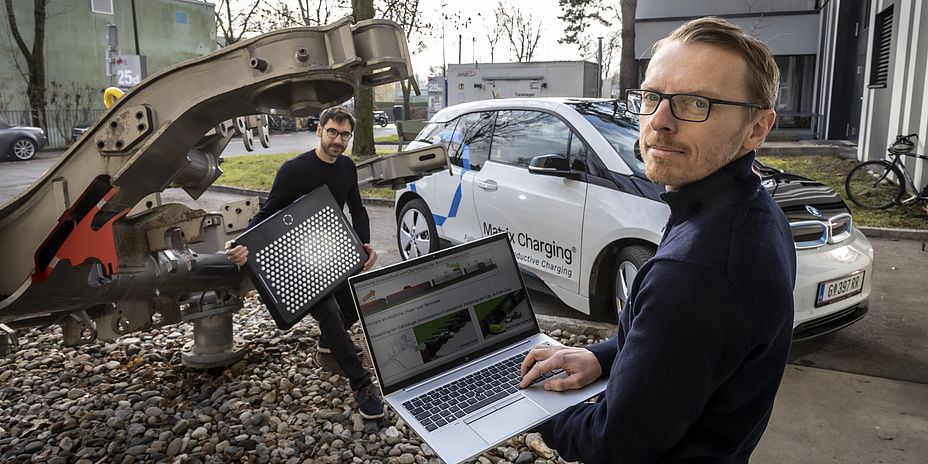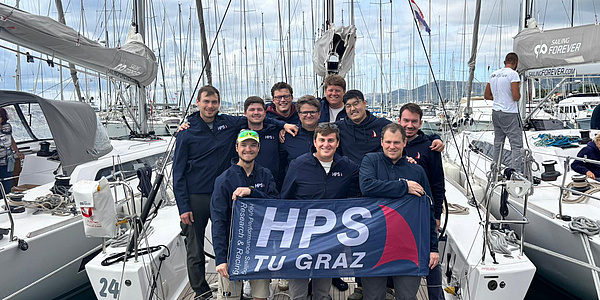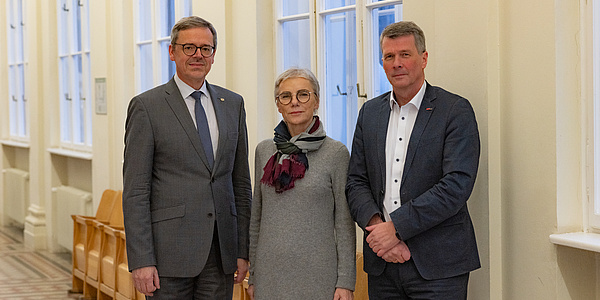When Trains Charge Electric Cars

Range remains one of the Achilles heels in electro-mobility. Those who drive long distances usually cannot avoid one or even several charging stops. And that takes time. But what if, during the charging stop, you cover a large part of the distance, arrive near your destination with a fully charged car and are able to cover the last few kilometres rested and without a worried look at the charge level? And what if, at the same time, a few more problems of electro-mobility were solved – for example, the problem of increased load on the power grid due to increasing numbers of electric cars?
The RailCharge project at Graz University of Technology (TU Graz) is dealing with precisely this possibility. The idea behind it is that in the future, electric vehicles will only have to make the journey to the railway station, and then will have their batteries charged on a car train during the journey. The car drivers will then be able to start the journey to their final destination fresh, relaxed, and with a fully charged car at the destination station.
Driving with a chauffeur for more than 100 years
This concept offers numerous advantages and solutions to challenges that are still holding back the current debate around electro-mobility. The first bone of contention is the range mentioned at the beginning. This issue with electric vehicles means that fairly large and heavy batteries are installed. From a purely economic and environmental point of view, however, this does not make much sense, especially since most individual journeys in the transport mix are relatively short. For this reason higher costs and resource consumption for large batteries could be avoided. Add to this the trend towards autonomous driving, and the alternative quickly becomes the railway, which has already been transporting passengers to their destination for around 100 years, mostly with electric propulsion and without the need to lay a hand on a steering wheel.
Let’s say people come home now in the evening and want to fast-charge tens of thousands of vehicles at the same time
“And if you add one passenger or rolling and air resistance to each kilometre-ton, it is also much more efficient to travel by rail,” says Armin Buchroithner from the Institute of Electrical Measurement and Sensor Systems, who is leading the RailCharge project on the TU Graz side. However, the aim is not to transfer all car traffic to the railway, but simply to bring together the best of both worlds: the flexibility and individuality of an electrified car on the first and last mile and the advantages of relaxed rail travel while the car is being fully charged.
Full speed ahead without charge level panic
This combination results in some secondary effects that also have a positive impact. Apart from winding routes through the mountains, it is also possible to travel faster by train over a long period of time without the battery charge level playing a role. And at the same time, the transported cars are charged via the train’s energy management system, which is supplied by its own power grid, so there is no impact on the stability of the public electricity grid. “Let’s say people come home now in the evening and want to fast-charge tens of thousands of vehicles at the same time. This puts a strain on our electricity grid, which is currently suffering somewhat anyway due to the expansion of volatile energy sources,” explains Armin Buchroithner. However, if the train network can be used during the train journey, then the expected loads are more controllable and also predictable.
In order to sound out the realistic market potential for the idea behind RailCharge, there was close cooperation with the TU Graz spin-off verkehrplus, which deals with transport planning. In the process, traffic flow analyses were carried out to evaluate how commuter and business traffic as well as logistics traffic is structured and what could be moved by rail under which conditions. Shifting a 45-minute commute to the train, for example, does not necessarily promise success under the current conditions, as a lot of time is added in relation to the journey length with the journey to and from the station as well as loading, and the cars cannot fill up on very much electricity during the short train journey with conservative charging technology. However, new car designs and further developments in power electronics should change this in the future and such applications could also be covered. Research is also being conducted into these approaches.
Commuter train versus passenger train
For other use cases, implementation would be more feasible from a current technical point of view. A good example is a holiday passenger train. In the main travel weeks, a train could be provided on which travellers could park their electric cars, spend most of the journey comfortably in a compartment and then arrive close to their holiday destination with a fully charged vehicle. Armin Buchroithner explains: “I can do it for a limited time, sell the tickets beforehand, it’s technologically feasible and I have long periods in which I can charge the batteries. It’s quite easy to charge them up because I don’t need a lot of power to do this on the long journey.”
This article is part of the TU Graz dossier "Recharged". Find further dossiers in our overview.
Charging via the connector
But just because the holiday train example would be easier to implement, some technical solutions would of course also be necessary here, and these have been developed or at least defined in the RailCharge project. This starts with the fact that the vehicle and its charging system must first be connected to the train’s energy management system. A normal charging plug with cable is unsuitable for this purpose, as the train is exposed to vibrations during the journey and the cable rubs against the car’s paintwork due to the movements of the train. That is why a suitable interface which is located on the underbody of the vehicle was developed together with the project partner easelink. From there, a retrofittable, flexible connector extends to a charging platform on the floor of the train and draws the charging current from it. This also eliminates the risk of tripping hazards in the car wagon due to cables.
In addition, the electricity on the train must also be provided in the appropriate form. Just because energy is available does not mean that voltage levels and frequencies are compatible with current charging pole technology. And if the train really does travel at high speeds of 300 km/h or more, the cars would have to be transported in a closed wagon, as otherwise they would probably lose their windows when entering a tunnel portal due to the resulting air pressure. “Currently, there are no wagons that are intended for this purpose,” reports Armin Buchroithner.
When new thinking meets certification
Wagon architecture is therefore also an important topic for RailCharge, and it is not only a question of how the cars are transported, but also how they can be loaded and unloaded as quickly as possible – and this despite a wide range of sizes. For Armin Buchroithner, a new way of thinking is needed here, which, however, partly contradicts current standards and certification possibilities. In the railway industry, there are certain geometries, modules, assemblies and technologies that are certified and can be used. Anything that deviates from this has a long way to go before it is allowed onto the track.
What I personally have in mind would be a technology demonstrator in the form of a wagon travelling on a test track
That is why the project benefits greatly from the fact that the Rail Competence and Certification GmbH RCC company is also on board. Owner Alexander Schimanofsky has a lot of experience and knows the difference between technological approaches that have a chance of certification and those that may seem technologically appealing and sensible but cannot be implemented for the railway. In conjunction with SSC Railtech, where wagon design is carried out in the form of innovative goods train solutions and loading solutions, realistically implementable concepts are created.
Charging without borders
The realistic implementation of one of these concepts would then also be the desired follow-up project of RailCharge. “What I personally have in mind would be a technology demonstrator in the form of a wagon travelling on a test track. Perhaps also a route with a border crossing. It would be nice to be able to demonstrate that this would work, for example, on a journey from Vienna to Dresden or Leipzig. Essentially, the aim is to show that it is possible to charge vehicles of different topologies on rail and they arrive fully charged,” says Armin Buchroithner.
Would you like to receive the latest stories, news, research stories, interviews or blog posts from TU Graz directly on your smartphone or in your email inbox? Subscribe to the TU Graz Telegram newsletter free of charge.
Kontakt
Armin BUCHROITHNER
Dipl.-Ing. Dr.techn.
TU Graz | Institute of Electrical Measurement and Sensor Systems
Phone: +43 316 873 30514
armin.buchroithner@tugraz.at




